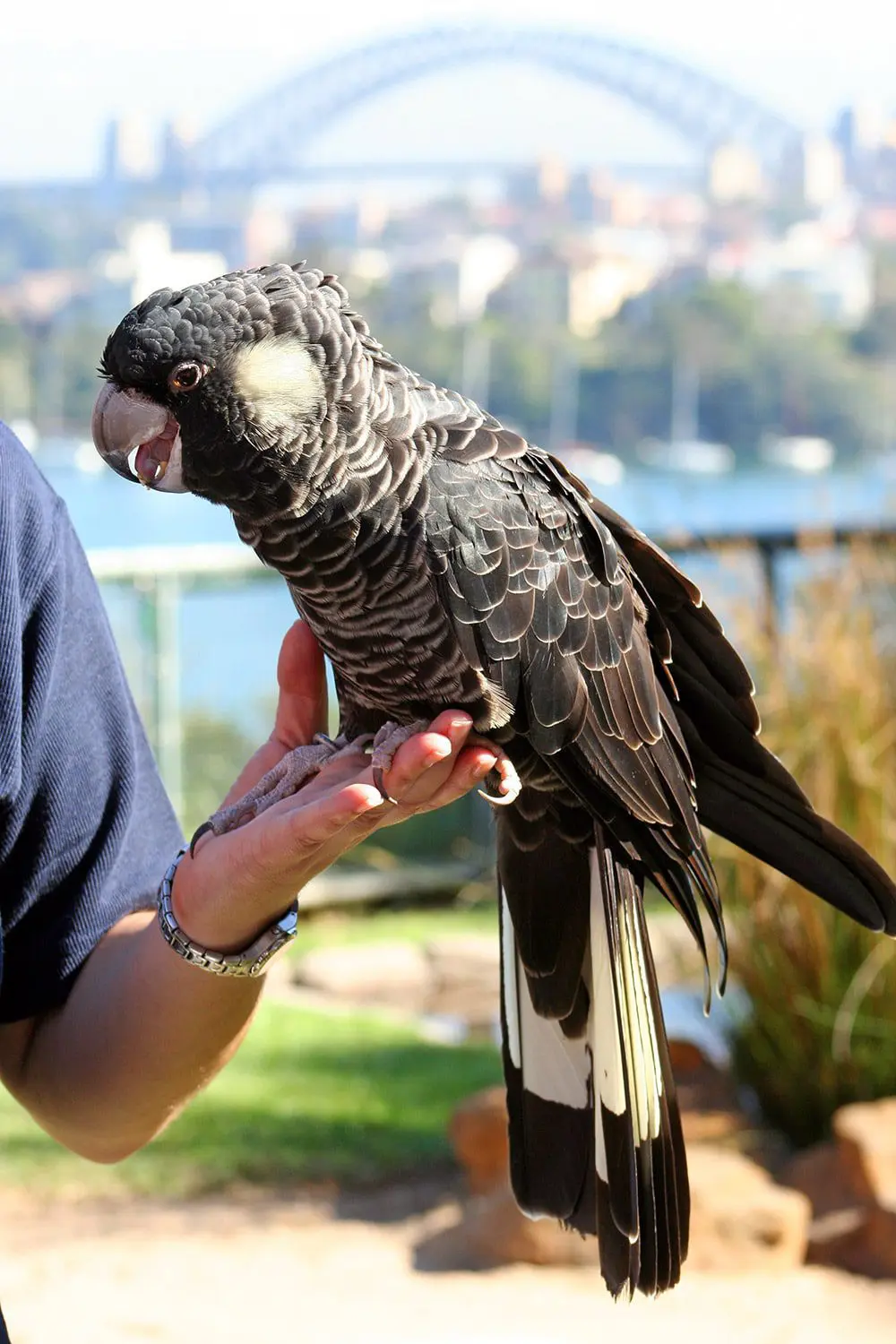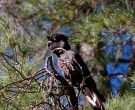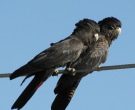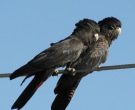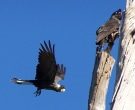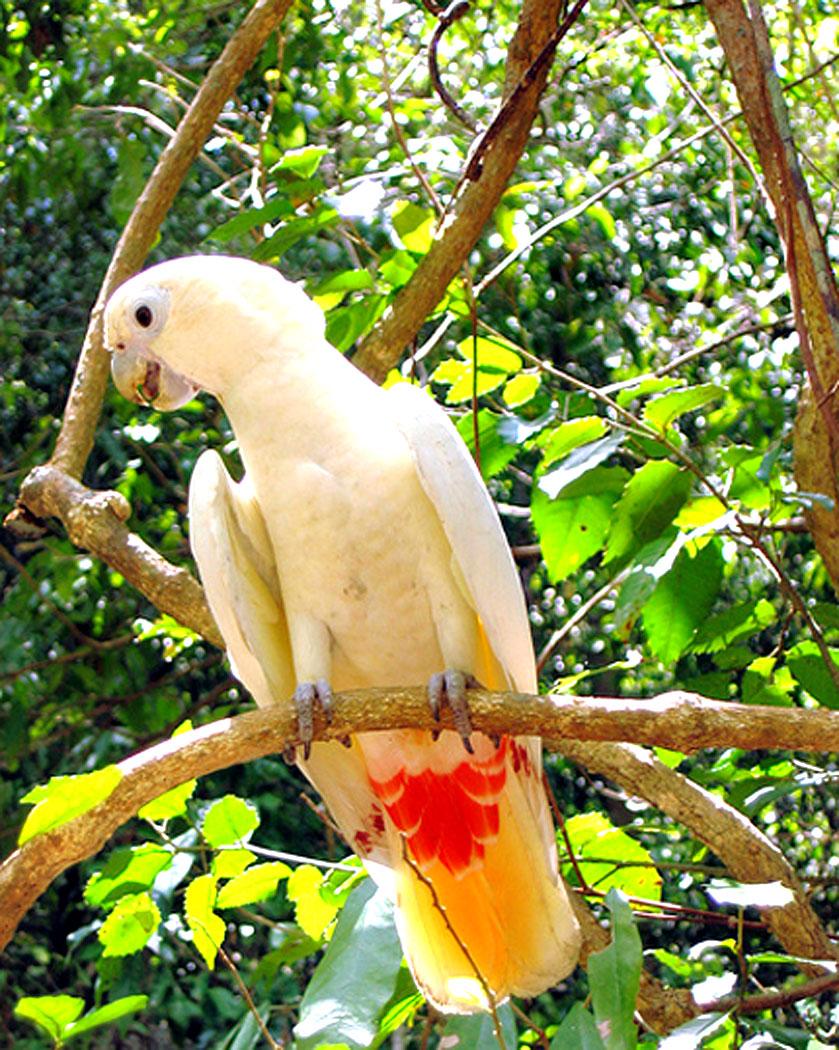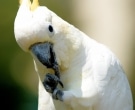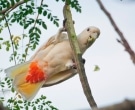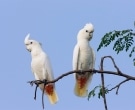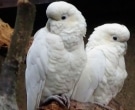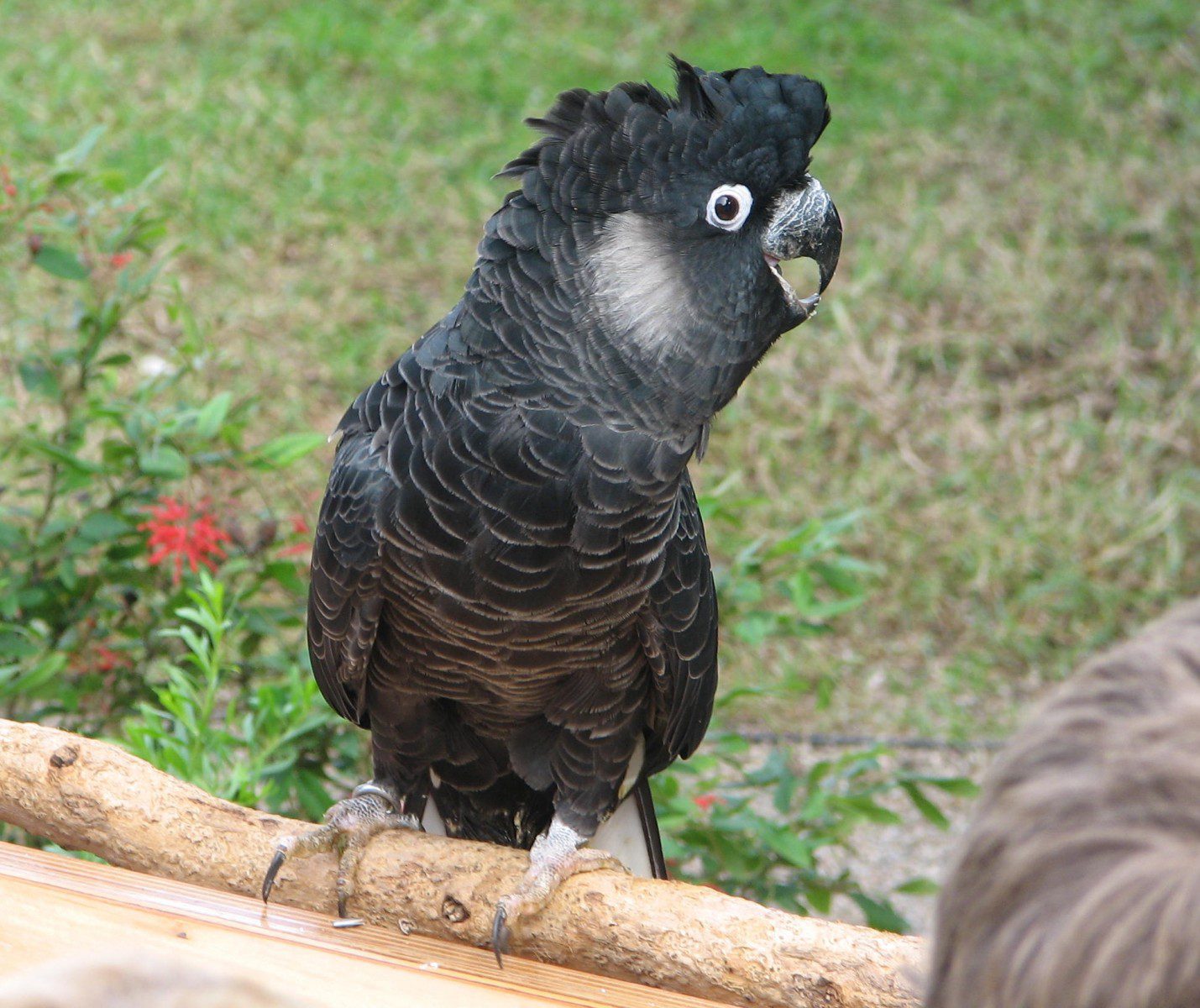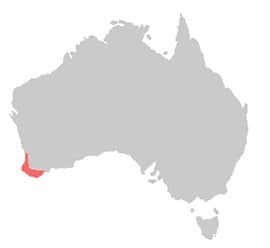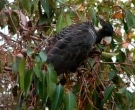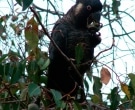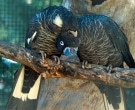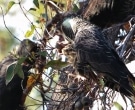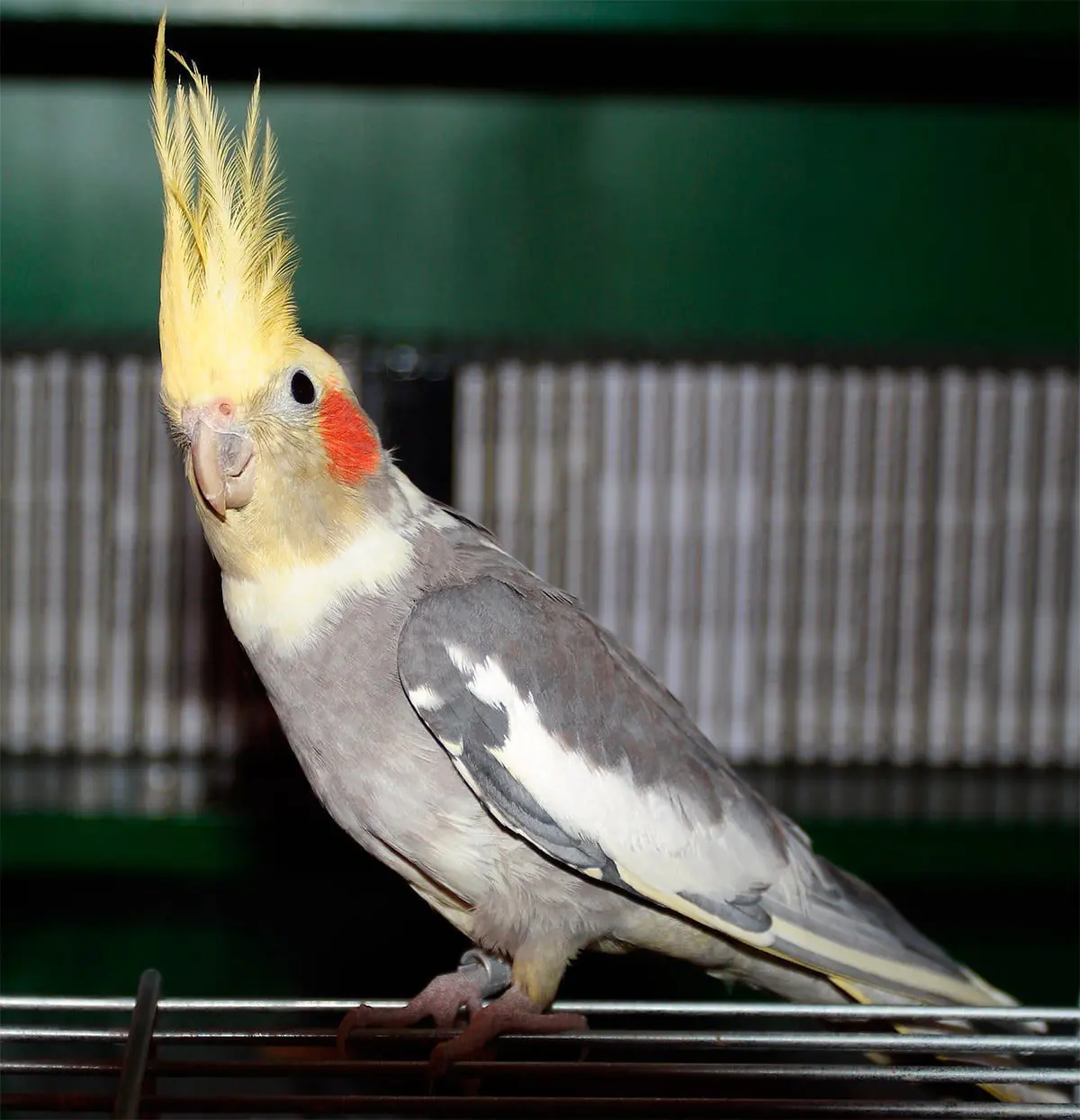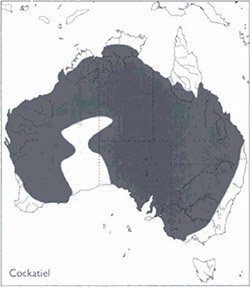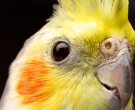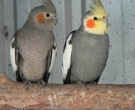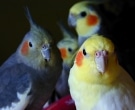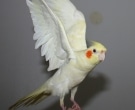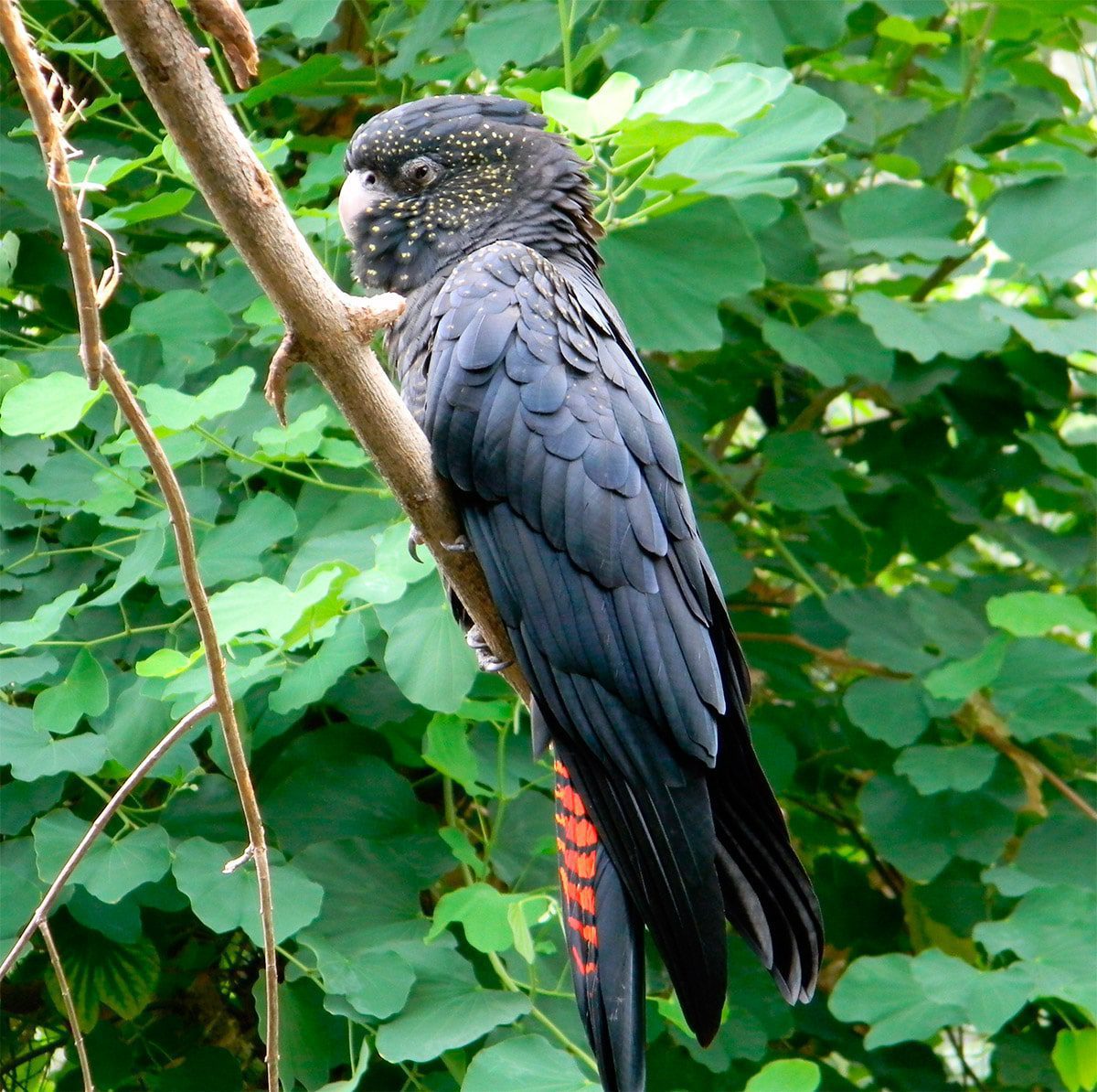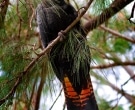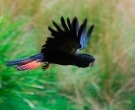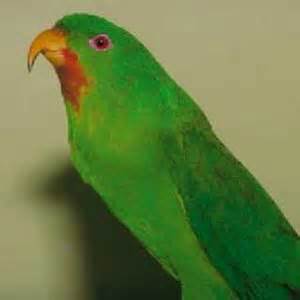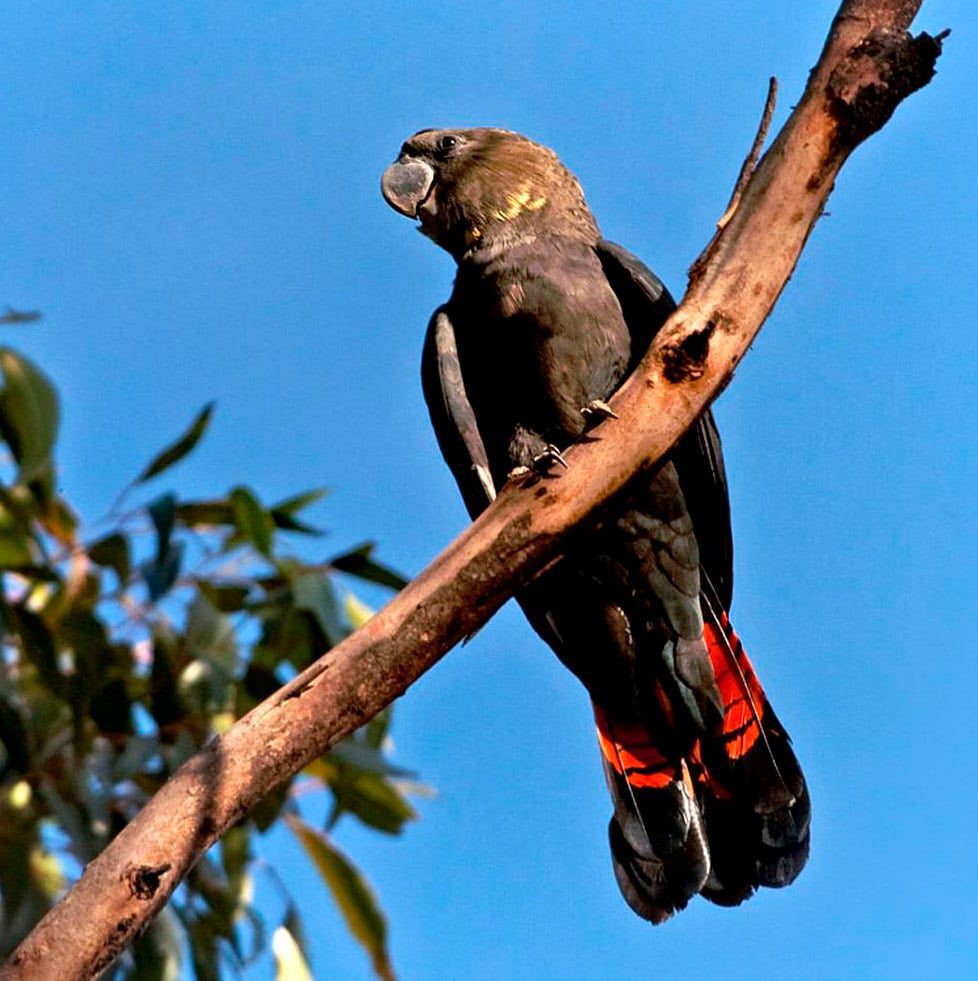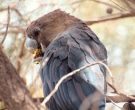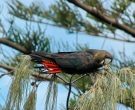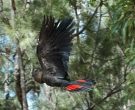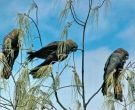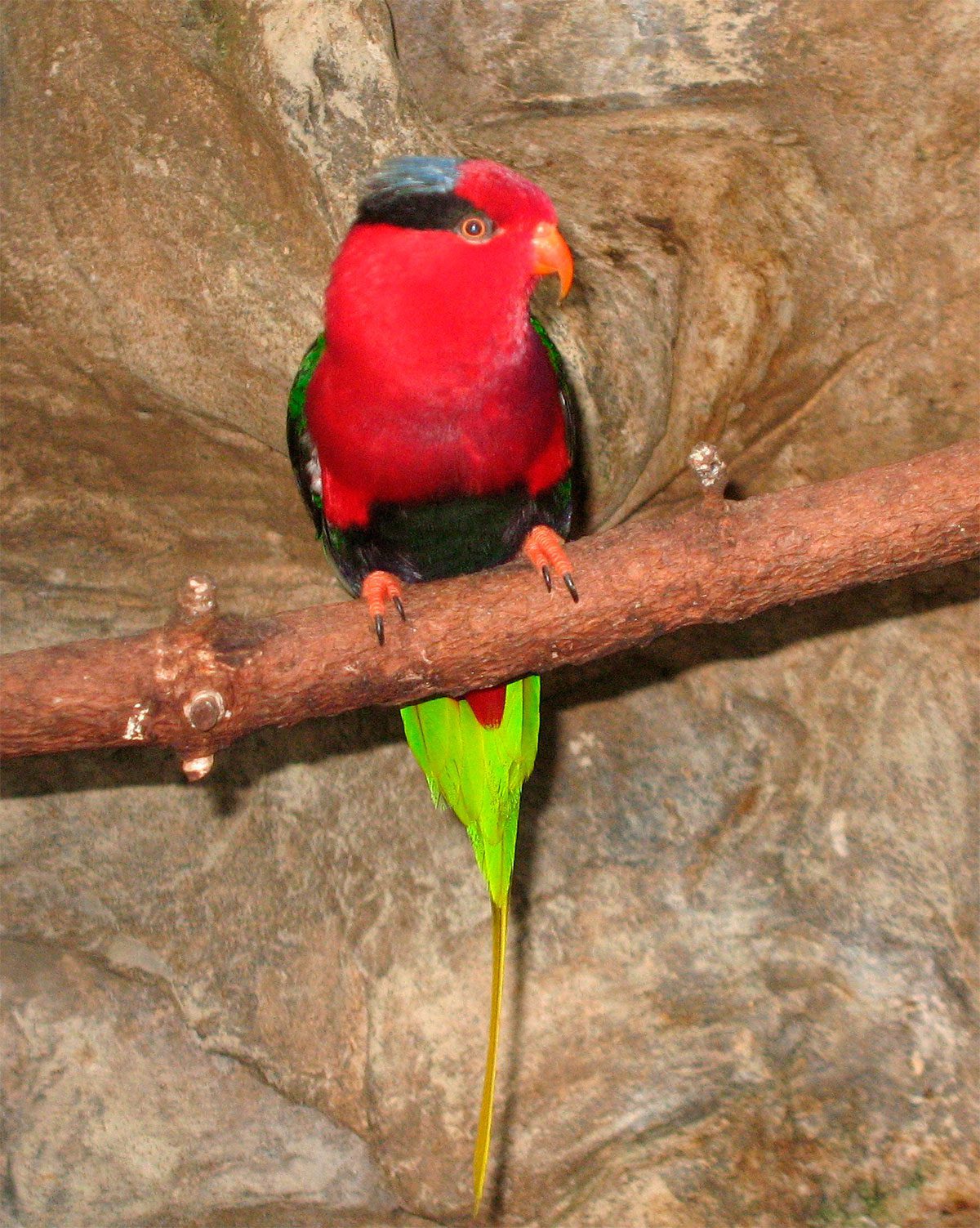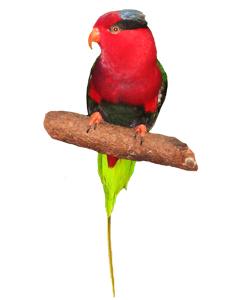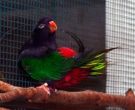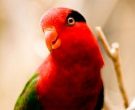Content |
|---|
Description
54 to 56 cm.. height and a weight between 520 and 790 g.
The Short-billed black cockatoo (Zanda latirostris) It is a large black cockatoo..
It has great bill black, crest erectile, white spot in the area ear and white panels on the tail. The female It is similar except patch area ear large and slightly yellowish white.
The immature Similar to adult female.
Closely related to Baudin's black cockatoo (Zanda baudinii). They were formerly treated as a single species.
- Sound of the Short-billed black cockatoo.
Habitat:
Mainly inhabits in native forests eucalyptus and shrubland or heathland. Visit temporarily plantations exotic pines.
Sometimes you see them in cities or at the edges of roads. It is also a visible visitor to the gardens containing native plants with hard fruits around Perth.
Usually they see them in groups of three or in small flocks, but occasionally gather in large flocks composed of hundreds or, exceptionally, thousands of birds. Sometimes it is associated with Baudin's black cockatoo (Zanda baudinii) wave Red-tailed black cockatoo (Zanda Banksia) in places where food is plentiful.
The species is said to be Residents in areas of high rainfall They are retaining much native vegetation and are emigrants of the driest regions and places where most of the native vegetation has been removed.
Reproduction:
They do not breed until they are at least four years old..
Adult birds They mate for life, and stay together throughout the year.
Reproduction occurs mainly in the region Wheatbelt, northwest of the Stirling Range about Three Springs, but it has also recorded on the coastal plain in the South West, about Bunbury.
The reproductive activity It is limited to eucalyptus forests. They make their nests in large holes in the top of the eucalyptus.
The eggs They are white or cream, and they have no marks. Son incubated by female only, for a period of 28 to 29 days. The nestlings are fed by both parents, Although during the first 10 to 14 days after hatching they are fed exclusively by the female.
Adults return to the same breeding area each year.
Food:
It feeds mainly from seeds and occasionally nectar, fruit and insect larvae.
Distribution:
Size of the area of distribution (reproduction / resident): 196.000 km2
Endemic southwest Australia.
Conservation:
State of conservation ⓘ |
||
|---|---|---|
 Endangered ⓘ (UICN)ⓘ
Endangered ⓘ (UICN)ⓘ
| ||
• Current category of the Red List of the UICN: In danger of extinction.
• Population trend: Decreasing.
On the basis of the distribution of birds during the breeding season, the total population of the Short-billed black cockatoo it has been estimated that is between the 11 000 and 60 000 birds, although there are those who affirm that its population could count on less than 10 000 birds.
The decline of this species It is mainly due to the loss and fragmentation of habitat. This has been caused by the clearing of native vegetation, mainly for agricultural purposes, Since the mid-20th century.
No specific information available on future changes in population size. But, the range of the species is thought to continue to contract for some time, which leads to a concomitant decrease in population size.
"Short-billed black cockatoo" in captivity:
A program captive breeding It was established in 1996 by the Department of Conservation and Land Management (CALM), in association with poultry farmers and licensed Zoo of Perth.
The genetic diversity of the captive population is enhanced by an 'abandoned' program’ that rehabilitates injured birds in the wild and then incorporates them into captive breeding.
Some eggs and chicks are caught illegally for sale in the markets of poultry. Although the demand for the species is said to have declined over the past decade, high market prices (approximately 3.000 dollars per bird and 5,000 $ couple) together with the scarce success of breeding captive birds, They suggest that Illegal take of this cockatoo will continue to be a continuing threat to the survival of this species..
scientific classification:
– Order: Psittaciformes
– Family: Cacatuidae
– Genus: Zanda
– Scientific name: Zanda latirostris
– Citation: Carnaby, 1948
– Protonimo: Zanda latirostris
Alternative names:
– Slender-billed Black-Cockatoo, Carnaby’s Black Cockatoo, Mallee Cockatoo, Short-billed Black Cockatoo, Mallee Cockatoo, Short-billed Black Cockatoo, (English).
– Cacatoès à rectrices blanches, Cacatoès de Carnaby (French).
– Carnabys Weißohr-Rabenkakadu, Weißschwanz-Rußkakadu (German).
– Cacatua-negra-de-bico-curto (Portuguese).
– Cacatúa Fúnebre de Pico Corto, Cacatúa Fúnebre Piquicorta (español).
Images Black-billed Black Cockatoo:
Sources:
– Avibase
– Parrots of the World – Forshaw Joseph M
– Parrots A Guide to the Parrots of the World – Tony Juniper & Mike Parr
– Birdlife
– Photos: Wikipedia, lostandcold (Flickr), Rabenkakadus – Wikipedia, Gnangarra…commons.wikimedia.org
– Sounds: Nigel Jackett
